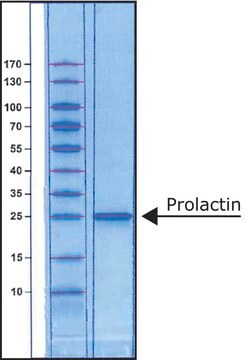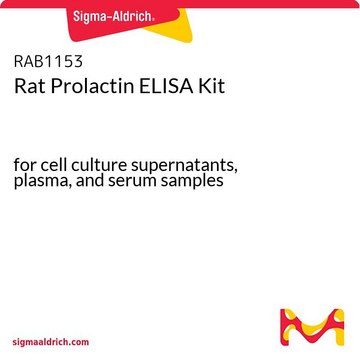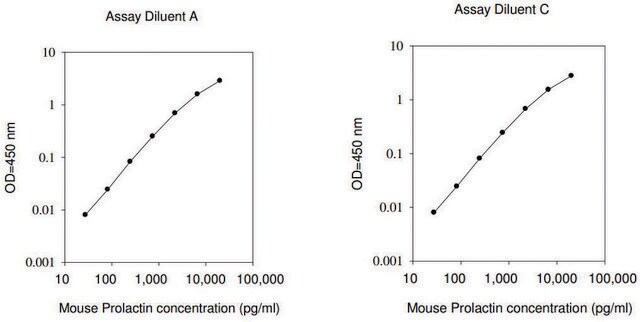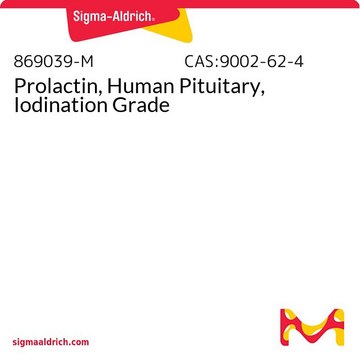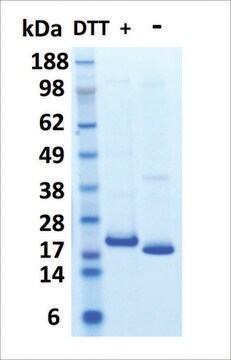SRP9000
Prolactin human
human, recombinant, expressed in HEK 293 cells
Synonym(e):
PRL
About This Item
Empfohlene Produkte
Biologische Quelle
human
Qualitätsniveau
Rekombinant
expressed in HEK 293 cells
Sterilität
non-sterile
Assay
≥95% (SDS-PAGE)
Form
liquid
Wirksamkeit
≤2 ng/mL Nb2-11 cells proliferation EC50
Haltbarkeit
2 yr
Mol-Gew.
23 kDa
Methode(n)
cell culture | mammalian: suitable
Verunreinigungen
≤1 EU/μg protein Endotoxin level
Lagertemp.
−20°C
Angaben zum Gen
human ... prl(5617)
Allgemeine Beschreibung
Prolactin (PRL) is a multifunctional polypeptide hormone primarily produced by the lactotrophic cells of the anterior pituitary gland in vertebrates.
Anwendung
- in in vitro experiments to examine its effects in sleep-like concentrations on T-cell migration
- to study its effects on claudin 2 (CLDN2) expression in the Caco-2 intestinal epithelial cell model
- in microplate assays to demonstrate the specificity of the antibodies for vasoinhibin
Biochem./physiol. Wirkung
Physikalische Form
Angaben zur Herstellung
Signalwort
Danger
H-Sätze
P-Sätze
Gefahreneinstufungen
Repr. 1B
Lagerklassenschlüssel
6.1C - Combustible acute toxic Cat.3 / toxic compounds or compounds which causing chronic effects
WGK
WGK 3
Flammpunkt (°F)
Not applicable
Flammpunkt (°C)
Not applicable
Analysenzertifikate (COA)
Suchen Sie nach Analysenzertifikate (COA), indem Sie die Lot-/Chargennummer des Produkts eingeben. Lot- und Chargennummern sind auf dem Produktetikett hinter den Wörtern ‘Lot’ oder ‘Batch’ (Lot oder Charge) zu finden.
Besitzen Sie dieses Produkt bereits?
In der Dokumentenbibliothek finden Sie die Dokumentation zu den Produkten, die Sie kürzlich erworben haben.
Unser Team von Wissenschaftlern verfügt über Erfahrung in allen Forschungsbereichen einschließlich Life Science, Materialwissenschaften, chemischer Synthese, Chromatographie, Analytik und vielen mehr..
Setzen Sie sich mit dem technischen Dienst in Verbindung.